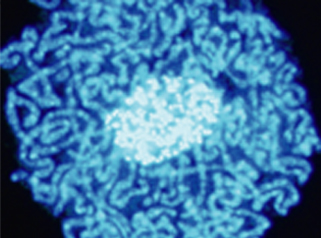|
|
|
|
|
| How the spin of
proton is
formed with
3 quarks and gluons? This is a very fundament question in QCD,
Quantum
Chromodynamic. The RHIC
Spin Project has been established to solve this problem by
colliding
two polarized protons for the first time in history. Collisions of polarized protons are measured with the PHENIX detector at RHIC.  PHENIX collaboration
Collaboration with accelerator group, theorists, and other RHIC experiments is the key for the success of the program. The RBRC experimental group is conducting RSC, Rhic Spin Collaboration.
|
Research
program
is organized in PHENIX
Spin Physics Working Group, and analysis of the PHENIX data
is performed at CCJ
combined with RIKEN super
computer
cluster. Recent analysis on the asymmetry of the neutral pion production has shown that the gluon polarization in proton is surprisingly small, i.e. gluon is less likely the career of proton spin. Natural ansatz from this discovery is existence of significant orbital motion in the proton. |
At RHIC QGP, Quark Gluon Plasma, should be created by
colliding
two gold nuclei, through which we can study the state of early Universe
just after the Big Bang.
Very recently,
enhanced e+e- pair yield above hadronic sources is
observed in
Au+Au collisions at RHIC. The characteristic temperature is determined
to be 221 MeV. This
will be the key measurement to determine the nature of the hot and
dens matter RHIC created.
|
While RHIC creates nuclear matter with high
temperature, study
of dense nuclear matter was being performed at KEK, and phi meson modification at
normal nuclear density was discovered as shown below. To extend our research further we proposed a new experiment to be done at J-PARC. |
|
|
|
|
|
| Theory group in Radiation Laboratory is studying
theoretical
aspects of physics at RHIC. Our global analysis for world-wide
asymmetry data showed the gluon
polarization in proton is strongly constraneted with recent data from
RHIC |
To enhance physics capability of PHENIX even further,
PHENIX
Detector Upgrade R&D is on going through the collaboration with BNL
instrumentation division, CERN-ALICE and CERN-NA60.
|
Developments of laser-induced plasma ion source is
going as a collaboration with BNL Accelerator Division. This source
ejects
the world highest intensity of carbon and aluminum beam so far, and
will be used for an ion injector for RHIC. This
method
is so compact and can be useful for cancer therapy as well.
|
By combining novel methods for neutron
optics with super conducting tunnel-junction detector, we aim to
perform
precise measurements for neutron decays. Applications go also to
neutron
interference and neutron scattering.
|
|
Recent Memorial Events
|
|||
|
Hiromi Okada, former Junior Research
Associate of Radiation Lab., received RHIC
& AGS thesis award 2007. R.
Muto, former Special Doctral Fellow of Radiation Lab., received 2007 Young
Scientist Award of the Physical Society of Japan. H En'yo and S.
Yokkaichi received Significant
Achievement Award in RIKEN, March 2008.
Click above to go to RIKEN Research
Article
|
Five-year
MoU between RIKEN and BNL was signed by BNL Director S, Aronson
and RIKEN President R. Noyori, Jan. 2007.
|
 T. D. Lee, Director
emeritus of RIKEN BNL Research Center has
awarded for The Order of the Rising Sun, Gold and Silver Star (旭日重光章),
Jan. 2007.
|
 Phenix event display was chosen for RIKEN Art & Science Exhibition. |
People Left
from Radiation Lab.
|
Radiation
Laboratory
Experiment
Theory
Secretaries
|
RIKEN-BNL
Research Center
Experiment
Administration, Secretary
|
|
OUT REACHES ( in Japanese)
|